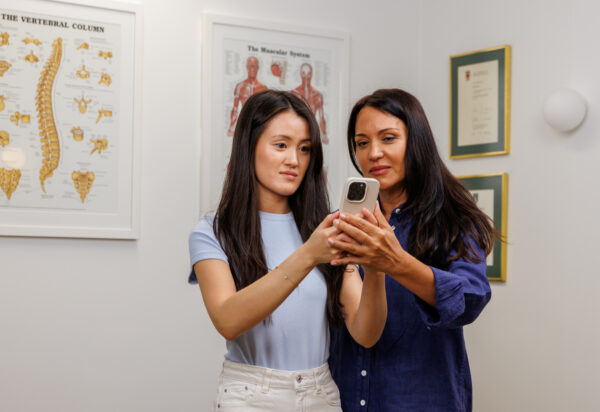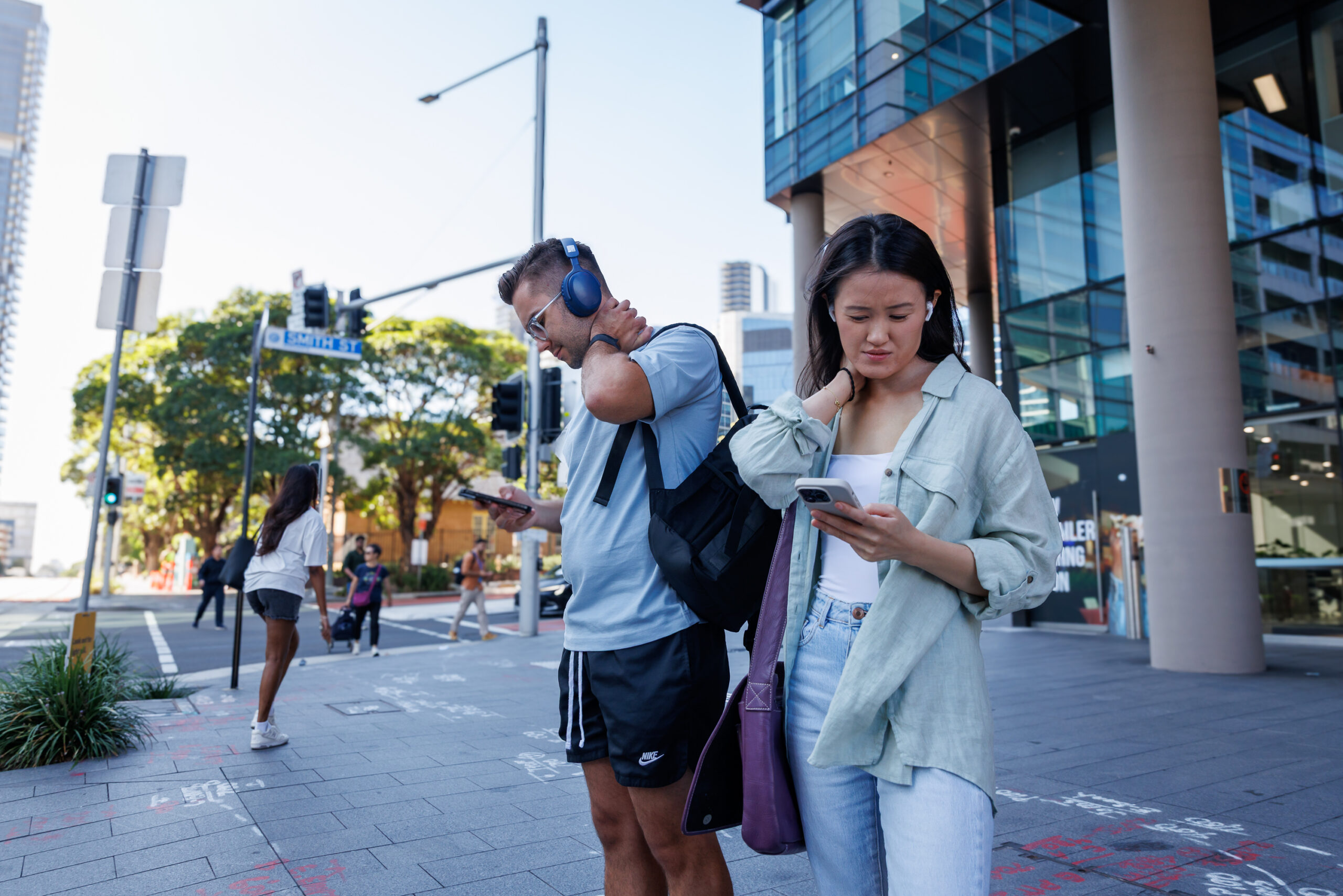New data from the Australian Chiropractors Association (ACA) about Tension Neck Syndrome (aka ‘tech’ or ‘text’ neck) is a major public health concern due to the overuse or misuse of technology.
And women are said to be most susceptible to the debilitating condition in a new report from global research company Pureprofile.
The report was released to coincide with Spinal Health Week which ran this week (May 26-June 1).
According to ACA President Dr Billy Chow, the data shows misuse of technology is impacting every aspect of our lives.
“The survey revealed women are the primary sufferers of neck pain in every age bracket, except 51–60 years with women aged 31–40 (73%) the most affected, reflecting a life-long, daily exposure to tech,” he says.
The survey covered all types of devices such as smartphones, tablets, laptops, desktop computers and game consoles.
“Women consistently reported higher neck pain rates across all devices and settings (home and work), and were significantly more affected by chronic pain, mental health impacts, and productivity loss,” Dr Chow says.
The survey found that 64% of Australians experience neck pain, much higher than the official statistic of 1-in-5, with 70% of sufferers reporting impeded movement due to the pain.
“What the data tells us is that neck pain is a widespread, increasingly gendered issue in Australia with 68% of women and 60% of men reporting symptoms, most linked to poor posture, extended screen time, and non-ergonomic device use,” Dr Chow says.
“With only 36% of neck pain sufferers aware that their pain was linked to device use, to help prevent users developing tech neck it’s imperative we adjust our thinking on how we use technology, how often we use it and the way we use it,” he says.
Dr Chow was also concerned by survey findings that 38% of neck pain sufferers did not consult a doctor and that only 29% sought a formal diagnosis — 78% of sufferers used over-the-counter pain relief and 47% relied on prescription medication.
The ACA says medications offer temporary relief but studies, including from the University of Sydney, show opioids do not help those with acute neck or back pain (lasting up to 12 weeks) and have no positive role in treatment.
The survey also notes that tech neck affects mental health and productivity; 24% of respondents experienced higher irritability, 20% noticed poorer concentration and 23% had sleep disruption.
The survey revealed that proper posture, regular breaks, and correct ergonomics significantly reduces the chances of neck pain.
Smartphone users who took regular breaks reported 33% less pain, while 85% of women who never took breaks had neck pain compared to 61% for women who did take a break.
SEPARATE SURVEY
In a separate survey of ACA chiropractors, over 80% of respondents reported that 50% or more of neck pain patients said their mental health had suffered; of those, 87% reported higher irritability, stress and poorer concentration, and 47% reported depression or anxiety.
Since the COVID lockdowns, cases of children and teenagers with tech neck have surged, the ACA says.
“Chiropractors reported a sharp rise in tech neck among young people with 34% reporting a ‘significant increase (+25%)’ and 27% a ‘moderate increase (11-24%)’ in teens,” Dr Chow says.
“29% reported a ‘significant increase’ and 25% found a ‘moderate increase’ in children experiencing tech neck so it’s vital we educate kids early on healthy device habits to help prevent long-term neck-related health issues.”

MOBILE PHONES
The ACA says a 2024 study published in Nature shows smartphone and computer use has a major impact on pain severity among tech neck sufferers; the most prevalent symptoms of neck and back pain were linked to the time spent on a device and the degree of discomfort.
“Although the study focused on mobile phone use by university students, with almost 87% of Australians now regular smartphone users, it’s fair to consider the findings may be broadly applied to the population generally, particularly young people who’ve grown up using smartphones and tablets,” Dr Chow says.
“With technology a vital part of our modern lives, not only must we monitor the length of time we use our devices but we must be mindful that overuse and the way we use them can negatively impact our spinal and mental health.”
“The ACA recommends limiting recreational screentime to two hours per day, holding devices at eye level to prevent bending the neck forward, changing posture and taking regular breaks every 10 minutes to look away from the device and move the neck from side-to-side,” Dr Chow said.
INCORRECT POSTURE
Incorrect and non-ergonomic use of computers is also a primary cause of tech neck, the ACA says.
With 75.5% of Australians aged 16 to 64 years-old using computers every day, incorrect use and non-ergonomic workspaces can lead to musculoskeletal disorders (MSDs).
“With MSDs, including tech neck, costing the economy over $55 billion annually through direct health costs, lost productivity and reduced quality of life, the burden on Australians and our economy is significant,” Dr Chow says.
“Whether using a laptop or a desktop at home, for study or work; it’s essential to take regular postural breaks every 30 minutes for movement and stretching and ensure workstations are set up ergonomically correct to help prevent tech neck, increase productivity and maintain overall spinal health and wellbeing.”
With millions of Australians suffering from neck pain, national Spinal Health Week is dedicated to promoting spinal health and preventing the incidences of tech neck and related health issues in Australians of all ages.
Get more on tech neck from https://www.chiro.org.au/campaigns/spinal-health-week/.






